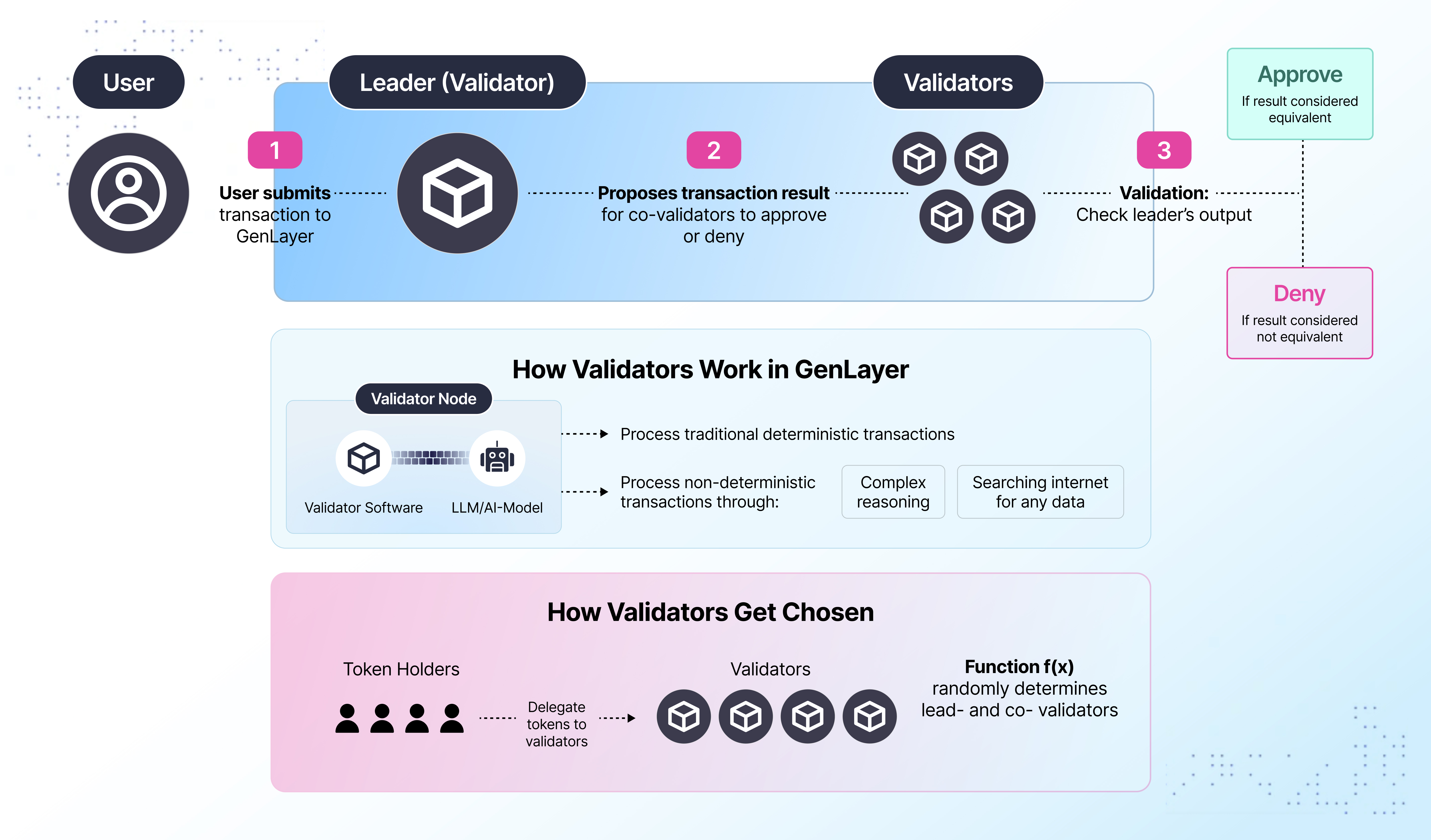Optimistic Democracy: How GenLayer Works

Optimistic Democracy is GenLayer's consensus mechanism, rooted in Condorcet's Jury Theorem (opens in a new tab) (click the link to check out our interactive model), which affirms that collective decision-making becomes more accurate as independent validators vote. The process unfolds in distinct phases:
-
Transaction Submission: A user sends a transaction to the GenLayer network.
-
Leader Proposes Result: A validator is randomly chosen as the Leader validator. It processes the transaction and proposes a result.
-
Validators Recompute: A committee of validators re-compute the transaction. They either approve or deny based on whether the output aligns with the Leader's result (i.e. is equivalent).
-
Result Accepted: Once a majority approves, the result is provisionally accepted.
-
Appeal: If any participant disputes the outcome, they can appeal within the Finality Window by posting a bond.
-
Additional Validation (If Appealed): A new set of validators may be chosen to re-evaluate the transaction. If the appeal is valid, they reward the appellant. Otherwise, the bond is forfeited.
-
Final Decision: After all appeals are resolved, the outcome becomes final.